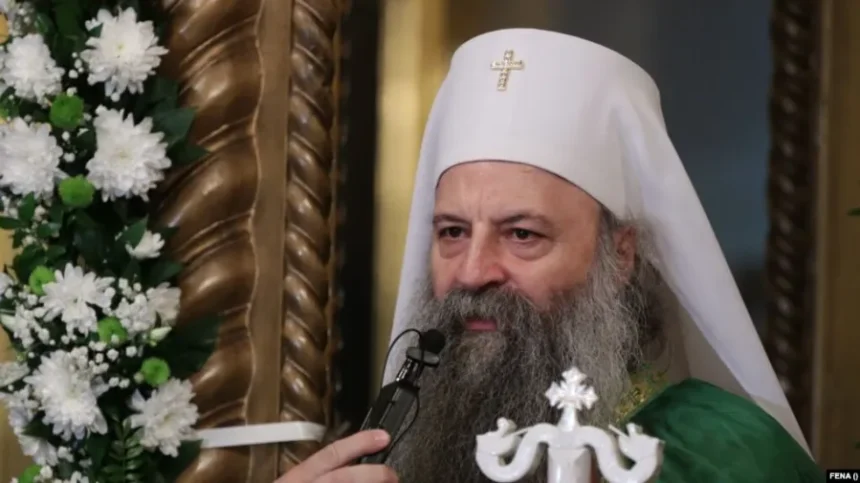In the post-Yugoslav landscape, few institutions have wielded as enduring and controversial an influence as the Serbian Orthodox Church (SOC). From praising war criminals to canonizing collaborators of fascist regimes, the Church has been repeatedly criticized for its nationalist rhetoric and historical revisionism — particularly in how it interprets the wars of the 1990s and World War II.
“The Church views history through an ethno-nationalist lens, where the Serbian side is always the eternal victim,” says historian Vladimir Velković. This perspective not only distorts the historical record but also absolves the Church and Serbian leadership from responsibility in fueling the wars in the Balkans.
Saints or Collaborators?
One of the most glaring examples is the canonization of World War II collaborators. Irinej Ćirić, canonized in 2022, is portrayed by the Church as a savior of Hungarian camps’ internees. However, Velković points out that he was in fact a member of the Hungarian parliament under the fascist regime of Miklós Horthy. Similarly, Milorad Vukojičić, a Chetnik commander convicted and executed for war crimes in Montenegro, was declared a saint in 2005.
Even more disturbing is the Church’s treatment of individuals such as Pavle Đurišić, a WWII Chetnik commander responsible for massacres of Muslims in Montenegro and Bosnia. He was praised as a “hero of unbreakable character” by Metropolitan Joanikije of Montenegro, despite being decorated by Hitler with the Iron Cross.
The Church and the Wars of the 1990s
The Serbian Orthodox Church was not a passive observer during the Yugoslav wars. Instead, it played an active ideological role, blessing paramilitary groups and aligning with the goals of Slobodan Milošević’s nationalist regime. A chilling example is a video in which a priest blesses the “Scorpions” paramilitary unit just before they executed six Bosniak civilians from Srebrenica in 1995.
Figures like Bishop Vasilije Kačavenda, who had close ties to Radovan Karadžić and Ratko Mladić, were never sanctioned by the Church, despite their public support for genocidal operations. Kačavenda’s only resignation came in 2013 amid accusations of pedophilia, not for his support of war crimes.
Another cleric, Filaret, was photographed holding an automatic rifle and a skull he claimed belonged to a Serb child killed by Croats. He awarded Vojislav Šešelj, convicted in The Hague for inciting persecution, with the “White Angel” Church decoration in 2015, calling him “a heroic defender of the Serbian people.”
Alignment with the State
The SOC continues to maintain a symbiotic relationship with Serbian state policy, especially regarding denial of the Srebrenica genocide and Kosovo’s independence. In 2024, Patriarch Porfirije gave his blessing to President Vučić before he traveled to the UN General Assembly to oppose the Srebrenica resolution. The Church has also rejected all offers from Kosovo institutions to finance reconstruction of religious sites damaged during conflicts.
Even in recent times, after the armed attack on Kosovo Police in Banjska (2023), Serbian gunmen led by Milan Radoičić took refuge in a Serbian Orthodox monastery. The Church did not condemn this act but issued a neutral statement expressing “concern,” and later refused to accept aid for repairing the monastery, distancing itself from Kosovo’s institutions.
The Church’s long-standing refusal to acknowledge Serbian culpability in wartime atrocities, while elevating convicted criminals to heroic or saintly status, shows not only a dangerous ideological continuity — what sociologist Todor Kuljić terms “anti-anti-fascism” — but also a willing complicity in perpetuating collective denial and ethno-nationalist myths.
As the region strives toward reconciliation and justice, the role of powerful institutions like the SOC remains critical. Without a truthful reckoning with the past, lasting peace may prove elusive.







